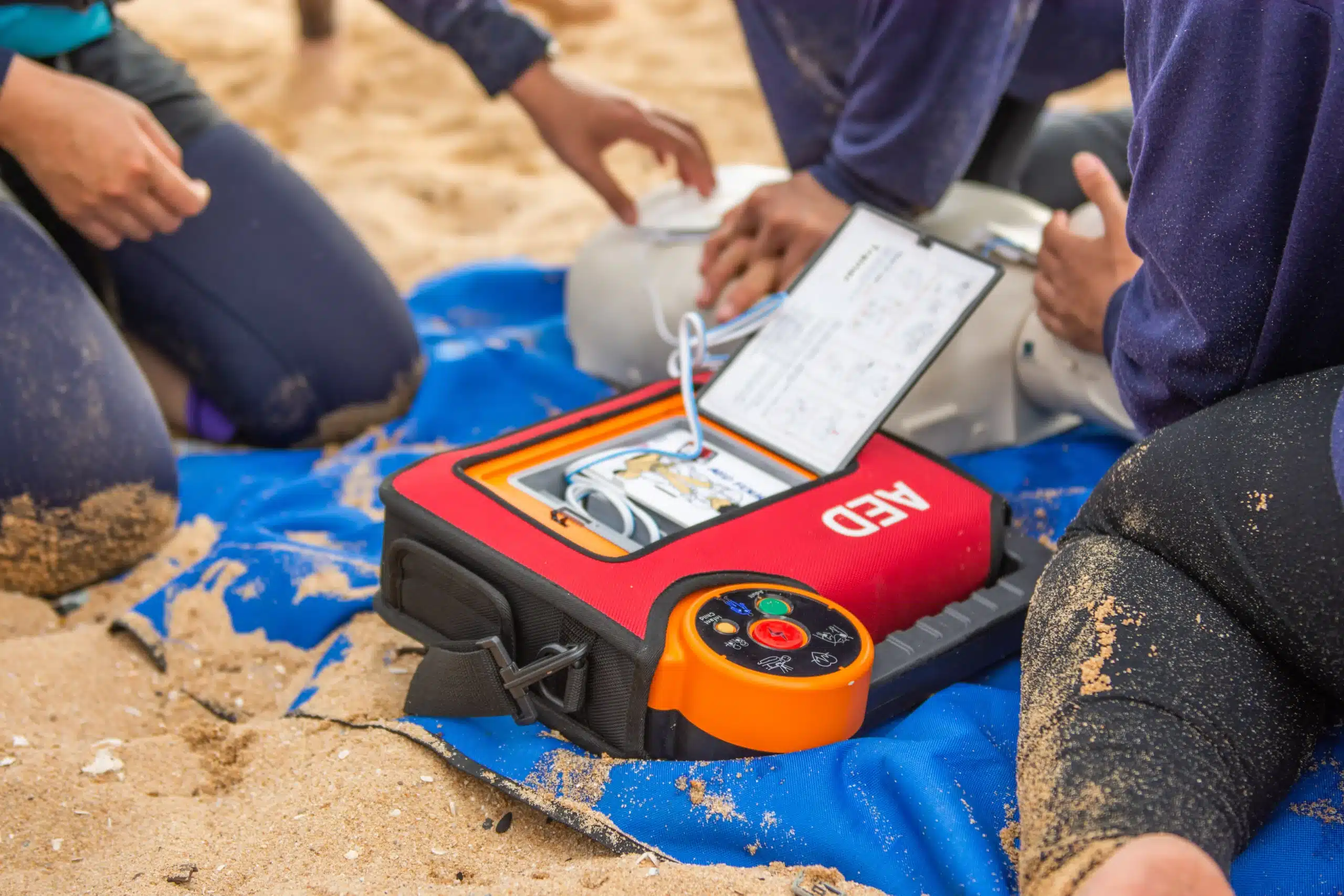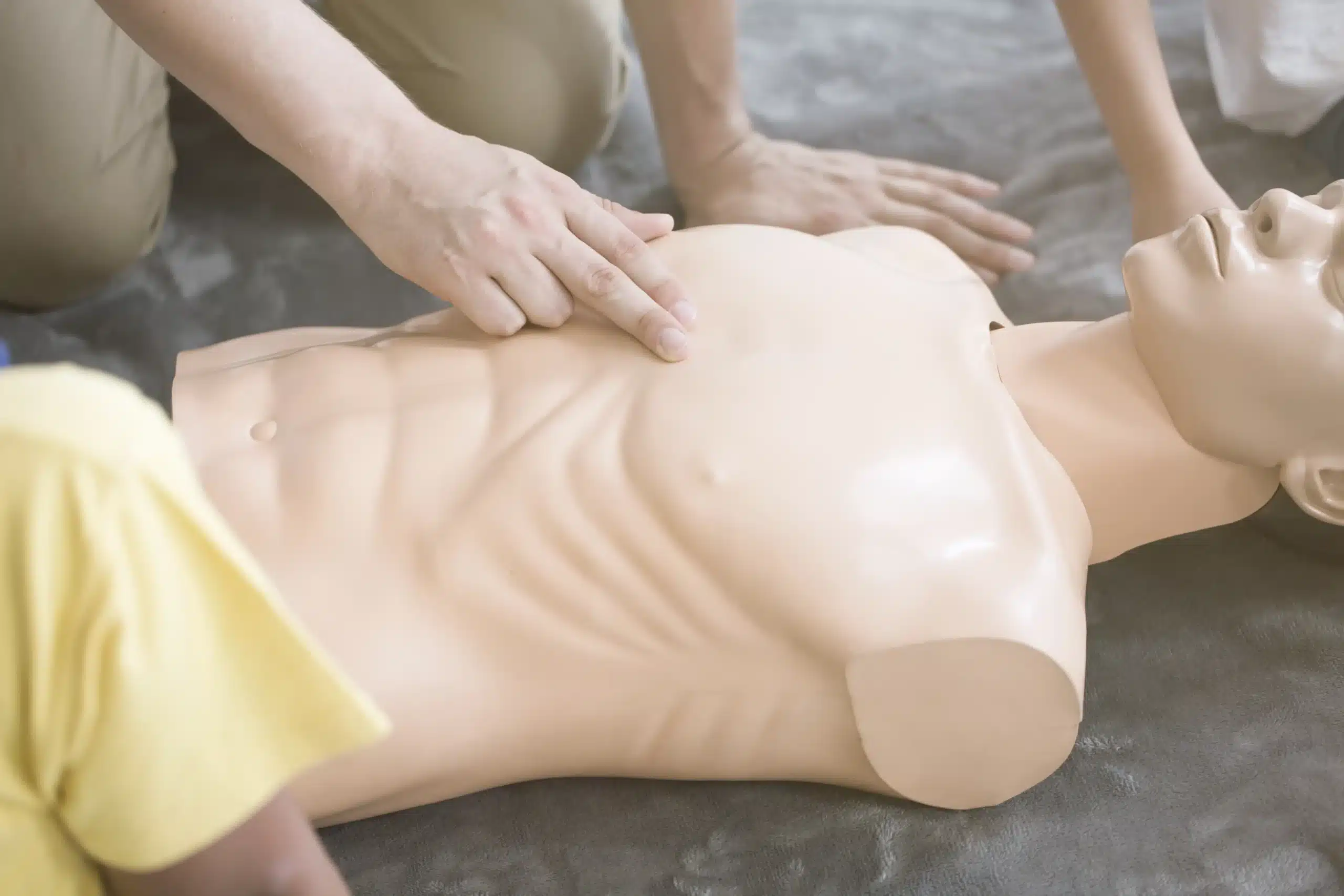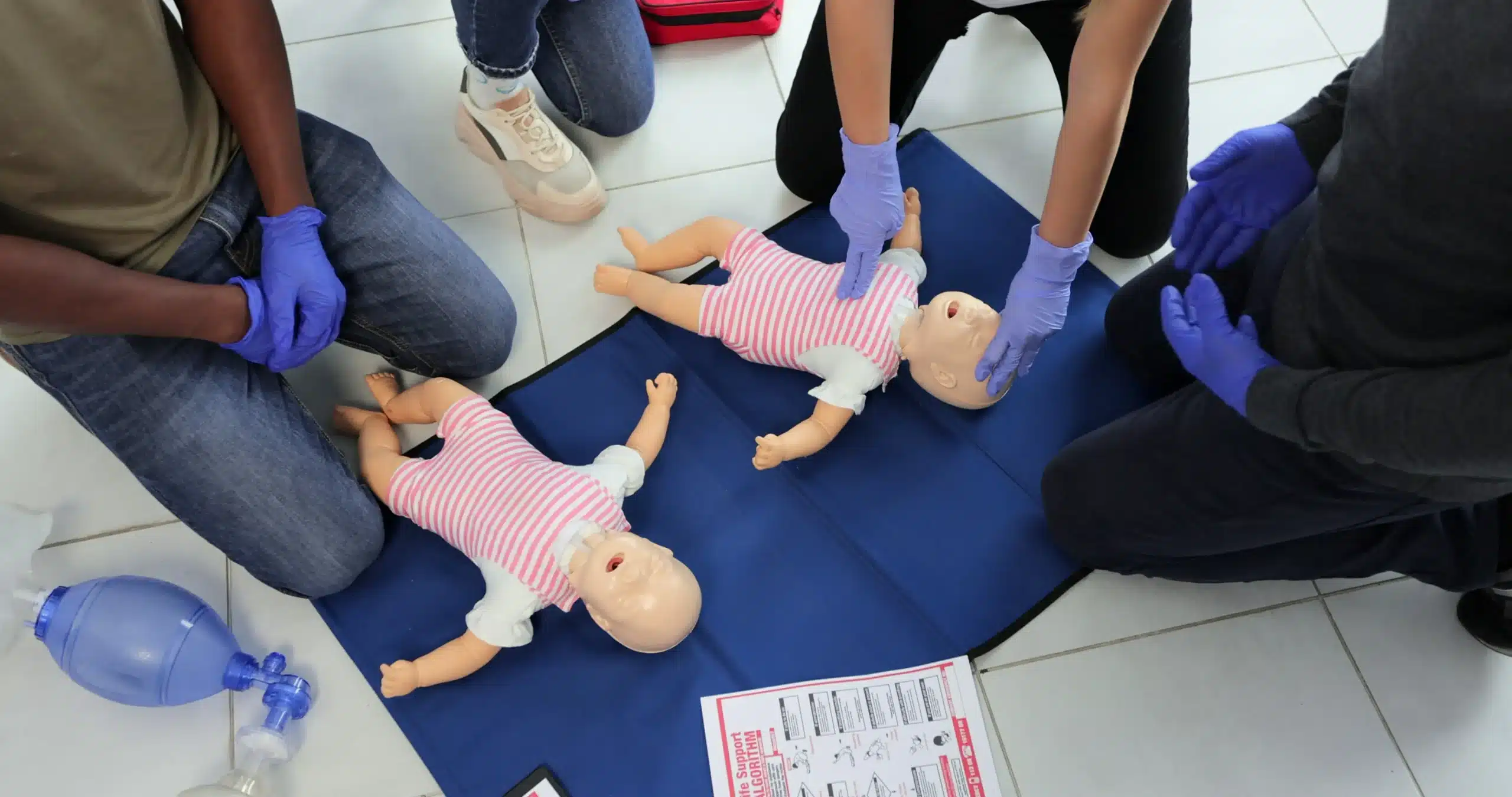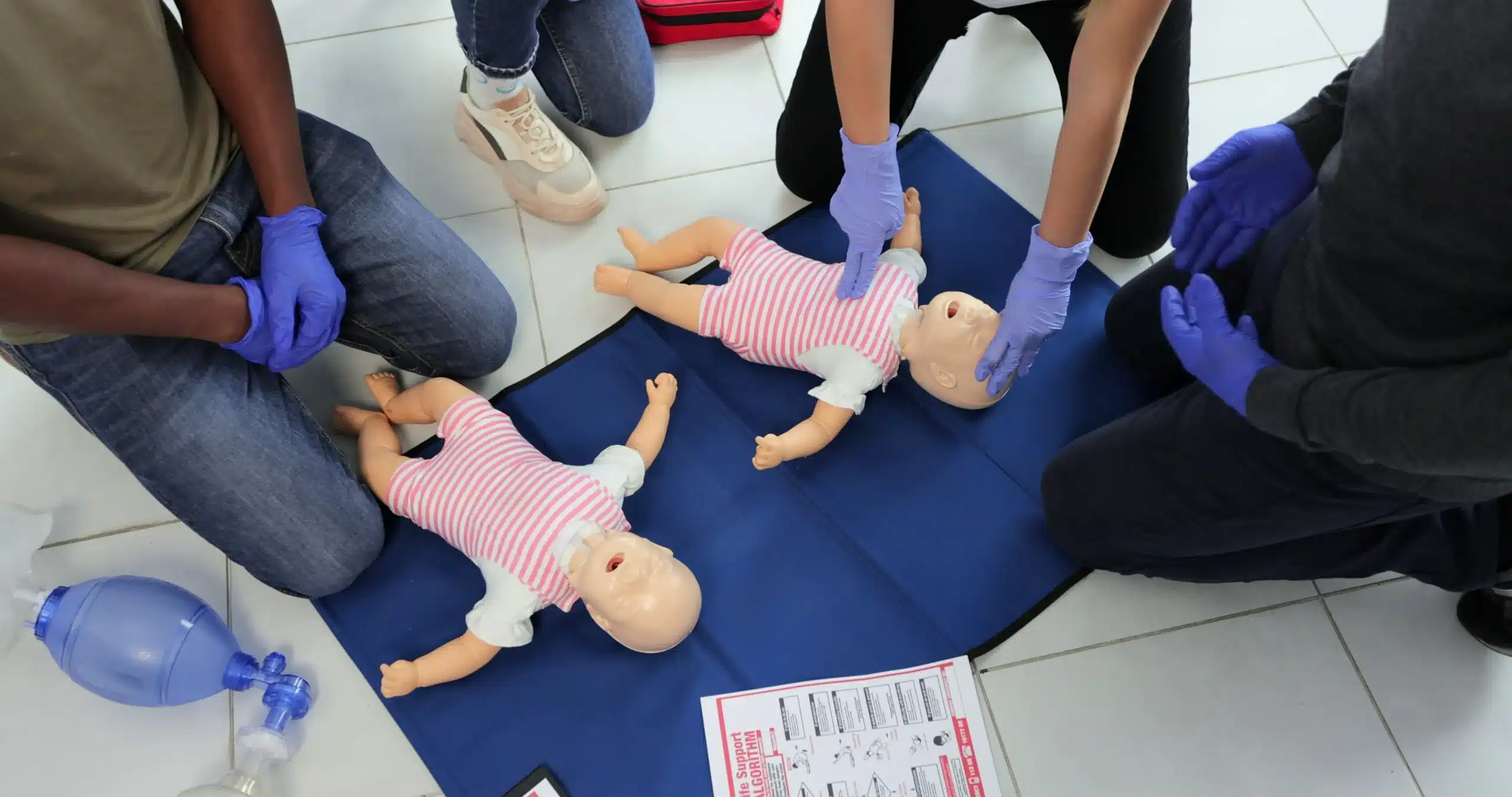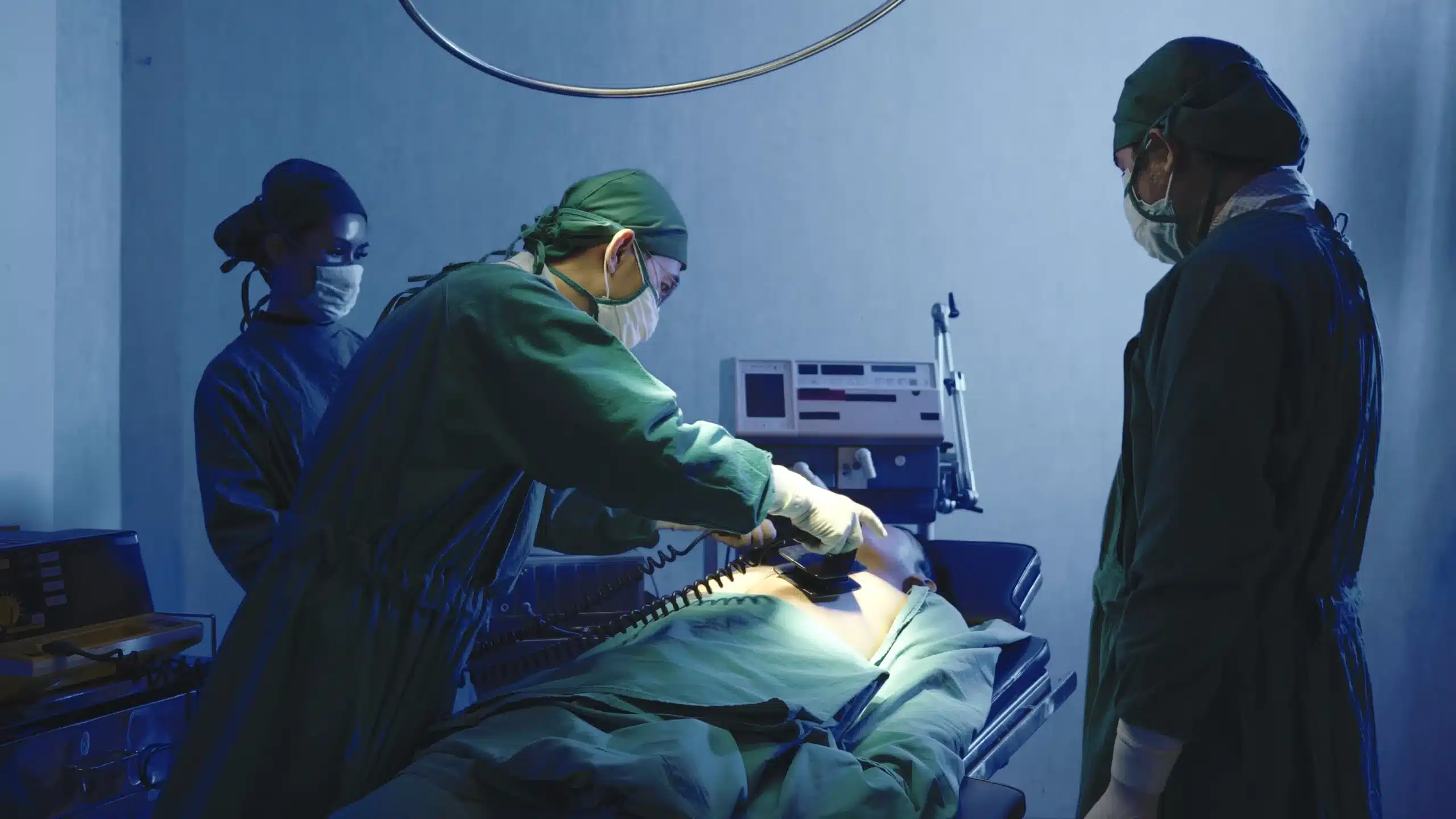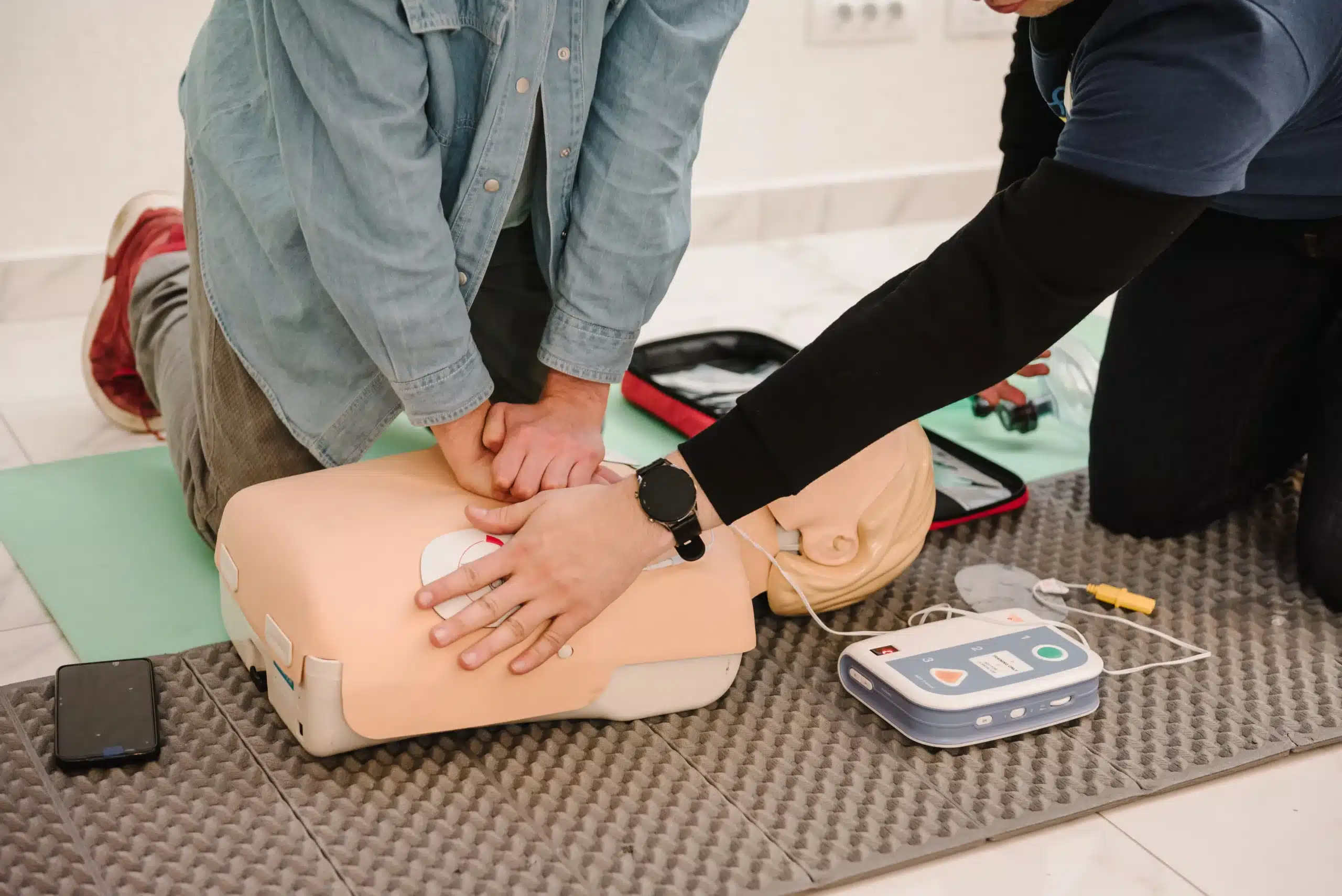Juggling work, family, and everything else makes it hard to find time for essential training like CPR. Online CPR classes in Berkeley offer a solution, bringing the classroom to you. Whether you’re a healthcare professional needing recertification or a parent wanting to be prepared for emergencies, online learning provides a flexible and convenient way to gain these lifesaving skills. This comprehensive guide explores the world of online CPR classes in Berkeley, covering available certifications, reputable providers, and what to expect during your training journey.
Key Takeaways
- Online CPR training offers flexibility, allowing you to learn lifesaving skills at your own pace and on your own schedule. Choose from a range of certifications, from basic CPR to advanced life support, to meet your specific needs.
- Hands-on practice is essential for CPR certification. While online courses offer convenience for the theoretical part, ensure your chosen program includes an in-person skills assessment with a certified instructor to meet workplace and regulatory standards.
- Research providers carefully, considering their reputation, course content, and available support. Look for accreditation from recognized organizations like the American Heart Association or the American Red Cross and read reviews from past students to ensure a quality learning experience.
What are Online CPR Classes in Berkeley?
Online CPR classes in Berkeley offer a convenient way to learn lifesaving skills. These courses cover essential techniques like CPR, using an AED, and responding to emergencies. The flexibility of online learning allows you to study at your own pace, fitting the training around your schedule. Many online CPR classes, like those from the American Red Cross, use interactive modules, videos, and quizzes to make learning engaging and effective. After successfully completing the coursework, you’ll typically receive a two-year certification recognized by employers across the country. Berkeley CPR Classes offers a range of online options as well.
Several providers offer online CPR certification in Berkeley. Safety Training Seminars offers American Heart Association (AHA) certified courses in CPR, Basic Life Support (BLS), and First Aid, designed for both healthcare professionals and the general public. If you prefer a blended learning experience, providers like Citywide CPR combine online learning with in-person skills practice. This approach lets you study the theory online and then attend a hands-on session to practice your skills with an instructor.
Top Online CPR Class Providers in Berkeley
Finding the right CPR class can feel overwhelming with so many options. To help you, we’ve compiled a list of reputable providers offering online CPR certification in Berkeley. Remember to verify that the certification meets your specific requirements, as employer and regulatory standards can vary.
American Red Cross
The American Red Cross is a well-known provider of CPR/AED training in Berkeley. They offer blended learning experiences, combining online instruction with in-person skills sessions. This allows you to choose the format that best fits your schedule and learning preferences. Check their website for the latest course schedules and availability.
Safety Training Seminars
Safety Training Seminars offers a comprehensive range of American Heart Association (AHA) certified courses, including CPR, BLS, ACLS, PALS, and First Aid. They also provide specialized training, such as the Neonatal Resuscitation Program (NRP) and courses designed for California childcare providers. This makes them a good option if you need a specific certification beyond basic CPR.
Berkeley CPR Classes
Located on Solano Avenue, Berkeley CPR Classes provides AHA-certified courses and features the Resuscitation Quality Improvement (RQI) program. This program offers a streamlined path to AHA certification, focusing on efficient and up-to-date training methods. Their extended daily hours (8 am to 10 pm) offer flexibility for busy schedules. Visit their site for details on course offerings and registration.
Citywide CPR
Citywide CPR offers CPR, first aid, and AED certification courses in Berkeley and nationwide. While their in-person Berkeley classes may not be regularly scheduled, their online options provide a flexible alternative. Be sure to check their website for the most current information on class availability and registration details.
National CPR Foundation
While the National CPR Foundation itself doesn’t offer classes, they provide helpful resources on CPR training and certification. This can be a valuable starting point for understanding the different types of CPR certification available and choosing the right one for your needs. They also emphasize the importance of selecting training that aligns with recognized standards.
Available Online CPR Certifications
Finding the right online CPR certification depends on your specific needs and career path. Here’s a breakdown of common online certifications:
Basic Life Support (BLS)
Basic Life Support (BLS) certification is a foundational course for healthcare providers, equipping you with the skills to respond to life-threatening emergencies. You’ll learn how to perform CPR, use an AED, and relieve choking. Online BLS certification offers a flexible way to learn these essential skills, covering everything from recognizing cardiac arrest to providing high-quality chest compressions.
Advanced Cardiovascular Life Support (ACLS)
For healthcare professionals involved in managing cardiovascular emergencies, Advanced Cardiovascular Life Support (ACLS) certification is crucial. This advanced course builds upon BLS skills, covering topics like airway management, intravenous access, and pharmacological interventions. Online ACLS training provides a convenient way to refresh your knowledge and stay up-to-date on the latest guidelines.
Pediatric Advanced Life Support (PALS)
Pediatric Advanced Life Support (PALS) certification focuses on the specific needs of infants and children facing respiratory or cardiac emergencies. Healthcare providers working with young patients will learn specialized resuscitation techniques, airway management, and medication administration. Online PALS courses offer a flexible learning experience tailored to these critical skills.
First Aid and CPR Combination Courses
Combining First Aid and CPR training into one comprehensive course offers practical skills for various emergency situations. You’ll learn how to treat minor injuries, control bleeding, manage burns, and respond to sudden illnesses, in addition to mastering CPR techniques. These combined online courses provide a well-rounded approach to emergency preparedness for anyone from parents and teachers to workplace safety officers.
What to Expect in an Online CPR Class
Online CPR classes offer a convenient way to learn this life-saving skill. They blend online learning with hands-on practice, ensuring you gain both theoretical knowledge and practical experience. Here’s what you can expect:
Video Lectures and Demonstrations
Online CPR courses often begin with video lectures and demonstrations. These videos cover essential topics like recognizing the signs of cardiac arrest, performing chest compressions, giving rescue breaths, and using an automated external defibrillator (AED). The American Heart Association emphasizes videos for clear, concise instruction on key psychomotor skills. You can usually access these videos on your computer or tablet, allowing you to learn at your own pace and review the material as needed.
Interactive Quizzes and Assessments
Throughout the online portion, you’ll encounter interactive quizzes and assessments. These tools reinforce the information from the video lectures and identify any areas where you might need further review. Some programs use simulated emergencies to create a more immersive learning experience, allowing you to apply your knowledge in realistic scenarios.
Hands-on Skills Practice Requirements
While online modules provide a solid foundation, CPR certification requires demonstrating your skills in person. After completing the online portion, you’ll schedule a hands-on skills session with a certified instructor. This session lets you practice the techniques you learned online under expert guidance. This blended learning approach combines online learning with personalized instruction.
Final Certification Exam
After the online modules and hands-on skills session, you’ll take a final certification exam. This exam typically involves demonstrating your CPR skills on a manikin and answering questions about CPR procedures. Upon successful completion, you’ll receive your American Heart Association certification card, valid for two years.
Essential CPR Skills & Techniques
CPR combines chest compressions and rescue breaths to help someone who has stopped breathing. These techniques are essential for effective resuscitation. Let’s break down these skills:
Chest Compressions
Chest compressions are a critical part of CPR. They help maintain blood circulation during cardiac arrest. Effective compressions involve pushing down hard and fast on the center of the chest, allowing the chest to fully recoil between compressions. This rhythmic action mimics the heart’s pumping action, circulating oxygenated blood to vital organs. Proper hand placement and depth are crucial for effective CPR and minimizing the risk of injury. You can learn these techniques through a CPR certification course.
Rescue Breaths
Along with chest compressions, rescue breaths are another key component of CPR. After a set of chest compressions, you’ll deliver rescue breaths by tilting the person’s head back, lifting their chin, and sealing your mouth over theirs to deliver a breath. These breaths provide oxygen to the person’s lungs, which is then circulated by the chest compressions. The combination of chest compressions and rescue breaths is vital for successful resuscitation. Online CPR training often includes videos and demonstrations to help you master this technique.
Using an AED
An AED (Automated External Defibrillator) is a portable device that can analyze the heart’s rhythm and deliver an electric shock if necessary to restore a normal heartbeat. Knowing how to use an AED can significantly increase the chances of survival during cardiac arrest. AED training typically covers how to turn on the device, apply the pads correctly, and follow the AED’s voice prompts. Many CPR certification courses include AED training as part of the curriculum.
Recognizing Cardiac Arrest
Recognizing the signs of cardiac arrest is the first step in providing effective CPR. Cardiac arrest occurs when the heart suddenly stops beating, leading to a loss of consciousness and breathing. Common signs include unresponsiveness, absence of normal breathing, and no pulse. Learning to quickly identify these signs can be the difference between life and death. CPR training will teach you how to assess a situation and determine if someone is experiencing cardiac arrest.
Online CPR Class Pricing
Understanding CPR class pricing is an important step when choosing the right course. Several factors influence the cost, including the type of certification, the course format (online or in-person), and any available discounts. Let’s break down the typical costs associated with different online CPR certifications.
Average Costs for Different Course Types
Online CPR courses offer a convenient way to get certified. Generally, basic CPR and First Aid certification is the most affordable. More advanced certifications, like BLS, ACLS, and PALS, typically cost more due to the comprehensive training involved. You can find these advanced certifications at Safety Training Seminars, including our BLS, ACLS, and PALS courses. For the most up-to-date pricing, it’s always best to check directly with the training provider. Safety Training Seminars is committed to offering the lowest prices in Alameda County.
Discounts and Promotions
Many training providers offer discounts, so keep an eye out! Safety Training Seminars offers discounts for group classes, which is a great option for friends, family, or coworkers. Check our website or contact us directly to learn about any ongoing special promotions.
Group Rates for Organizations
For organizations needing to train multiple employees or members, ask about group rates. Many CPR training providers offer discounted pricing for larger groups. Safety Training Seminars is happy to work with you to create a custom solution for your organization’s training needs. Contact us to learn more.
Is Your Online CPR Certification Valid?
One of the most common questions about online CPR certification is its validity. The answer isn’t a simple yes or no. Let’s break down the key factors.
OSHA Compliance and Requirements
The Occupational Safety and Health Administration (OSHA) sets workplace safety standards, and their stance on CPR training is clear: hands-on training is required. This means a practical skills evaluation is necessary to be fully OSHA compliant, even if the knowledge portion is online. This ensures you can perform CPR effectively in a real-life emergency. Hard Hat Training offers further information on OSHA’s requirements.
Employer Acceptance of Online Certifications
Even with an OSHA-compliant online CPR certification, consider your employer’s requirements. Some employers readily accept online certifications, especially from reputable organizations like the American Heart Association (AHA) or the American Red Cross (ARC). Others may prefer or require in-person training. CPR For Employment discusses this further. Checking with your employer about their CPR certification policy will save you time and potential issues.
Renewal Process and Timeframes
Online CPR certifications, like in-person certifications, typically expire after two to three years. CPR For Employment offers helpful information on renewal timelines. Renewing your certification usually involves a refresher course, which may have online and in-person components. Staying current ensures you’re always prepared to help when needed.
Online vs. In-Person CPR Classes
Deciding between online and in-person CPR training? Both have their pros and cons, so understanding the differences can help you choose the best fit for your lifestyle and learning preferences. We offer a variety of in-person CPR classes in Alameda if you prefer hands-on learning.
Flexibility and Convenience
Online CPR training offers unparalleled flexibility. Providers like the American Training Association for CPR (ATAC) allow you to learn from anywhere with an internet connection, fitting your studies around your schedule. You can complete the coursework at home or on the go using your computer or tablet. This is especially helpful for busy professionals, parents, and students juggling multiple commitments.
Self-Paced Learning Advantages
Online CPR courses empower you to learn at your own speed. If you grasp concepts quickly, you can move through the material efficiently. If a particular topic requires more attention, you can take your time and review it thoroughly. This self-paced structure accommodates different learning styles and helps ensure a solid understanding of the material. It’s a great option for those who prefer a more personalized learning experience.
Addressing Common Misconceptions
One common misconception about online CPR certification is that it doesn’t involve hands-on practice. While the coursework itself is online, reputable programs require a hands-on skills assessment with a certified instructor. This ensures you can perform CPR effectively in a real-life emergency. It’s also important to verify whether online certification meets OSHA compliance and is accepted by your employer or organization. Always double-check the requirements before enrolling in a course.
Find the Right Online CPR Class in Berkeley
Choosing the right online CPR class can feel overwhelming with so many options. Focus on these key factors to find a course that fits your needs and learning style.
Accreditation and Provider Reputation
First, confirm the program’s accreditation. A reputable certifying organization, like the American Heart Association (AHA) or the American Red Cross, ensures your training meets industry standards and is widely accepted. Check if the organization providing the online portion of the course is affiliated with or recognized by the AHA or ARC. This is especially important if your employer requires CPR certification.
Course Content and Depth
CPR training isn’t one-size-fits-all. Different courses cater to various experience levels, from basic CPR for community members to advanced training for healthcare providers. Look for a course that aligns with your current skills and professional requirements. Some online programs offer blended learning, combining online modules with in-person skills sessions. This approach allows you to learn the cognitive material at your own pace and then practice the physical skills under the guidance of a certified instructor.
Support and Resources Offered
A good online CPR class provides more than just videos and quizzes. Consider the support resources available. Does the program offer instructor access for questions? Are there additional study materials or practice tests? Reliable customer support and readily available resources can make a big difference in your learning experience. Check if the provider offers support through email, phone, or live chat, and see if they have a student portal with supplementary materials. A robust support system can be invaluable, especially when learning complex techniques.
Customer Reviews and Testimonials
Before enrolling, take a few minutes to read reviews from other students. Past participants can offer valuable insights into the course’s quality, the platform’s user-friendliness, and the effectiveness of the instruction. Student feedback can give you a realistic picture of what to expect and help you make an informed decision. Look for reviews on third-party sites as well as the course provider’s website. Pay attention to comments about the clarity of the materials, the responsiveness of the support team, and the overall learning experience.
Get Ready for Your Online CPR Class
So, you’ve decided to take an online CPR class—smart move! Whether you’re a healthcare provider, a childcare professional, or just someone who wants to be prepared for emergencies, online learning offers a convenient way to gain these lifesaving skills. Before you dive in, let’s cover a few things to help you get the most out of your online CPR training.
Technical Requirements and Setup
Getting your tech sorted is the first step. You’ll want a reliable internet connection and a device you’re comfortable using, like your desktop computer or tablet. Most online CPR courses are designed to be accessed on various devices, giving you the flexibility to learn wherever you’re most comfortable.
Study Materials and Equipment Needed
While online courses offer flexibility, you’ll still want to gather a few things. Check with your chosen CPR program for specifics, but you’ll likely need materials like a textbook or study guide. Since CPR certification involves demonstrating physical skills, you’ll also need to get your hands on a practice manikin. This allows you to practice those essential chest compressions and rescue breaths. Many providers offer manikin rentals or information on where to purchase one.
Time Management and Learning Tips
One of the best things about online CPR training is that it often fits your schedule. You can usually find classes offered on weekdays, weekends, or even in a self-paced format. To make the most of this flexibility, set aside dedicated study time, just as you would for an in-person class. Break down the material into manageable chunks, and don’t be afraid to review videos and demonstrations multiple times. Active learning, like taking practice quizzes, will also help you retain the information and feel confident on test day.
Related Articles
- CPR Certification in Alameda: Your Comprehensive Guide – Alameda CPR Classes
- CPR Classes in Alameda, CA
- American Heart Association Courses – Alameda CPR Classes
- BLS Training in Alameda: The Ultimate Guide – Alameda CPR Classes
- Northern CA CPR Directory – Alameda CPR Classes
Frequently Asked Questions
Is online CPR certification accepted in Berkeley?
While online courses offer flexibility for learning the material, a hands-on skills assessment with a certified instructor is generally required for certification to be valid in Berkeley and accepted by most employers. Always check with your employer or organization for their specific requirements.
What is the difference between BLS and CPR certification?
CPR is the core skill within BLS (Basic Life Support). BLS certification encompasses CPR but also includes training on using an AED and relieving choking. It’s designed for healthcare providers and those in specific professions. A basic CPR certification focuses solely on CPR techniques and is suitable for the general public.
How much do online CPR classes cost in Berkeley?
The cost varies depending on the provider and the type of certification. Basic CPR and First Aid courses are typically the most affordable, while more advanced certifications like BLS, ACLS, and PALS usually cost more. Check with specific providers like Safety Training Seminars for their pricing and any available discounts.
How long does online CPR certification last?
Most online CPR certifications are valid for two years, similar to in-person certifications. Renewal typically involves completing a refresher course, which may include both online and in-person components.
What should I look for when choosing an online CPR class?
Look for accreditation from a reputable organization like the American Heart Association or the American Red Cross. Consider the course content, available support resources, and student reviews. Ensure the program includes a hands-on skills assessment component to meet workplace requirements.


